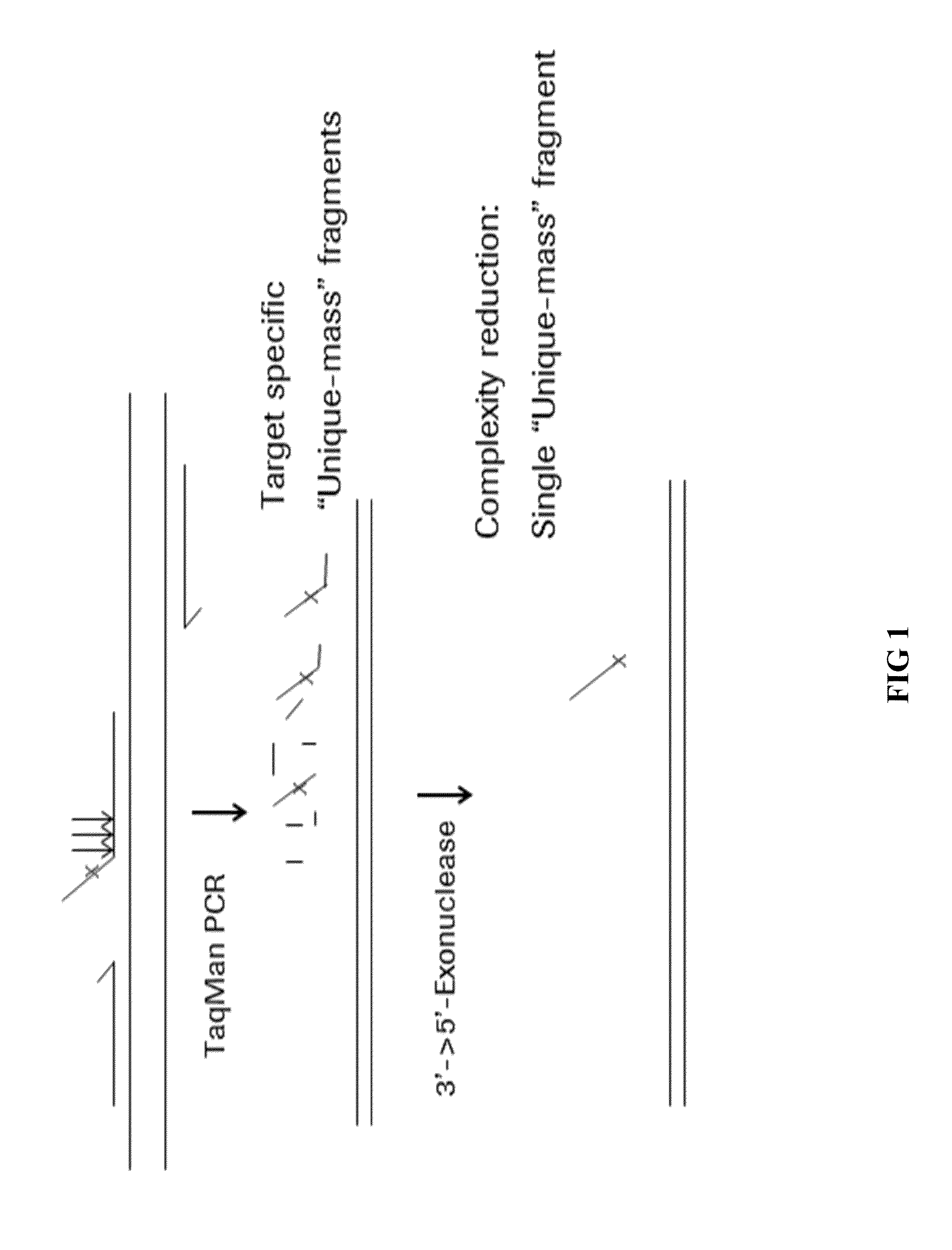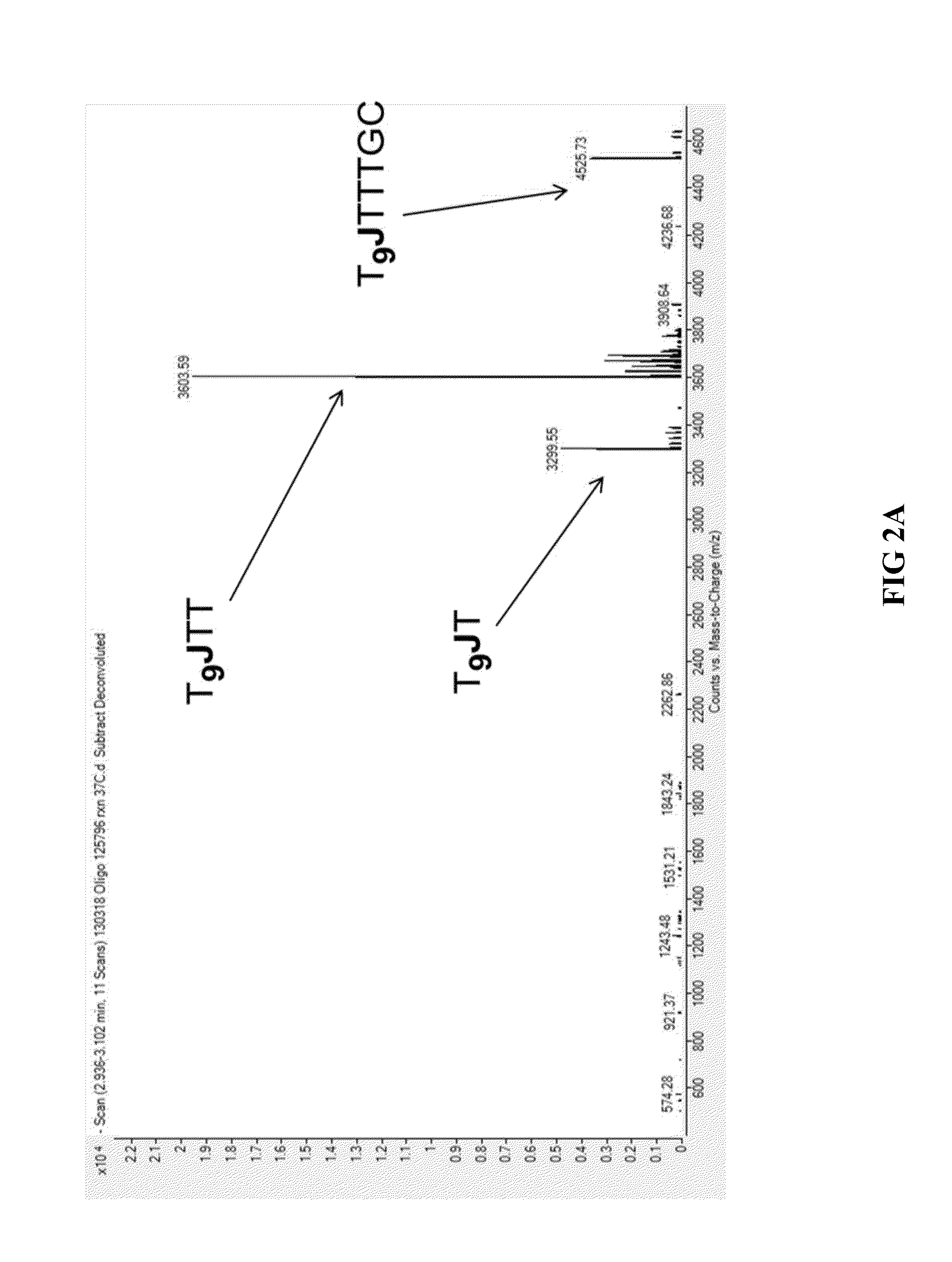Nucleic acid target identification by strucutre based probe cleavage
- Summary
- Abstract
- Description
- Claims
- Application Information
AI Technical Summary
Benefits of technology
Problems solved by technology
Method used
Image
Examples
example 1
Evaluation of Exonuclease-Resistant Modification
[0087]In order to evaluate the different exonuclease-resistant modifications that can be used to practice the methods of the present invention, the following oligonucleotide was synthesized: T9JTTTGC (SEQ ID NO: 1), in which T9 represents the 5′ flap portion and J represents the modification. The modifications used in one particular experiment included phosphorothioate, 2′-amino-uridine, 2′-fluoro-uridine, 2′-O-methyl-uridine, a propane-diol spacer, and a HEG (full-name) spacer. 1 μM of each oligonucleotide was suspended in 1× Exonuclease I Buffer (New England Biolabs) and 2 units of Exonuclease I (New England Biolabs) and incubated at 37° C. for thirty minutes. The reactions were terminated by chilling on ice and the exonuclease-digested products were analyzed by liquid chromatography-mass spectrometry (LC-MS) in an Agilent Q-TOF 6530 instrument. The Exonuclease I-digested products from oligonucleotides that contain three of the modif...
example 2
Detection of EGFR T790M Amplification Using 5′-Flap Probe
[0088]A PCR assay was performed to detect the T790M mutation (nucleotide change 2369 C→T) of the human Epidermal Growth Factor Receptor (EGFR) gene. The following primers were used for amplification of a region of the EGFR gene that includes the position of the T790M mutation:
(SEQ ID NO: 2)Forward primer:5′ CCTCCCTCCAGGAAGCCTACGTGA 3′(E = t-butyl benzyl-dC, SEQ ID NO: 3)Reverse primer:5′ CAGTCGAAGGGCATGAGCTGEA 3′
[0089]For detection, the following 5′-Flap Probe was utilized, 5′-C6ECCTGCACGGTGGAGGTGAGGCAGP-3′ (SEQ ID NO: 4), where C6 represents the non-complementary 5′ Flap portion, E represents 1,3-Propanediol and P represents phosphate. PCR reaction mixtures were prepared on a 96-well plate with the following final concentrations: 50 mM Tris-HCl (pH 8.0), 80-100 mM potassium chloride, 200 μM each dATP, dCTP and dGTP, 400 μM dUTP, 200 nM of each primer, 200 nM 5′-Flap probe, target DNA (1,000-100,000 copies of EGFR plasmid, 20 ...
PUM
| Property | Measurement | Unit |
|---|---|---|
| Electrical resistance | aaaaa | aaaaa |
| Thermal stability | aaaaa | aaaaa |
Abstract
Description
Claims
Application Information
 Login to View More
Login to View More - R&D
- Intellectual Property
- Life Sciences
- Materials
- Tech Scout
- Unparalleled Data Quality
- Higher Quality Content
- 60% Fewer Hallucinations
Browse by: Latest US Patents, China's latest patents, Technical Efficacy Thesaurus, Application Domain, Technology Topic, Popular Technical Reports.
© 2025 PatSnap. All rights reserved.Legal|Privacy policy|Modern Slavery Act Transparency Statement|Sitemap|About US| Contact US: help@patsnap.com



